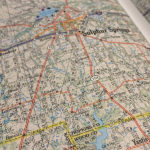Churches and other houses of worship face complex choices about when and how to reconvene, and responsible leaders depend on the expertise of public health officials to offer guidance. Medical expertise, however, is just one factor—albeit a critical one—in the decisions ahead.
Clergy should integrate this guidance with the beliefs, values, goals and priorities of their respective congregations, and these choices call for not only expertise, but wisdom.
As Americans navigate the COVID-19 pandemic, public health officials often have advised certain kinds of activities are essential, while others are not, and that we should all “trust the science” in order to discern the difference.
As Americans have attempted to “trust the science” over the last several months, we have discovered much of the science seems to change from one week to the next. In fact, two highly touted coronavirus studies that received global coverage have been retracted recently after questions emerged. This is why it is wise to remember the oft-quoted statement, “One study does not a field make.”
What the research indicates
Indeed, scholars tend to rely on systematic reviews of an entire research literature before drawing too many conclusions, a burden of proof difficult to maintain during an emerging crisis surrounding a novel virus.
With this in mind, we briefly review the extensive research literature that establishes the many physical and mental health benefits of attendance and participation in religious communities and activities.
These benefits include greater longevity and reported well-being; less depression, suicide, smoking and substance abuse; better cancer and cardiovascular disease survival; lower divorce rates; greater social support, meaning, and purpose in life; and more charitable giving, civic engagement and human flourishing.
Further, faith also can help people moderate their subjective well-being during times of economic booms as well as busts.
Paying careful attention to surveys
This extensive research literature may not be well-known among most epidemiologists. According to a survey published by the New York Times on June 8, attending church or other religious services will be one of the last activities epidemiologists resume. Most respondents (43 percent) indicated they would defer at least a year before attending worship again, if ever.
Sign up for our weekly edition and get all our headlines in your inbox on Thursdays
This data doesn’t tell the whole story, though. While the headline touts “when 511 epidemiologists expect [to resume] everyday activities,” nestled within the table lies acknowledgment that only 220 epidemiologists responded to the religious service query, a response rate far lower than any other item.
One of the authors kindly responded to an inquiry about the outlier and noted that response options included “I didn’t do this before COVID.” Many respondents don’t plan to attend worship again any time soon because they didn’t attend before.
The author also reiterated that the survey reports individual choices rather than prescriptive recommendations. Epidemiologists reported their individual intentions based on factors including personal and household health, region of residence, work environment and personal risk tolerance. In other words, these epidemiologists are making complex decisions based on a multitude of public and private factors, just like the rest of us.
The challenge is that amidst appeals to “trust the science,” it’s hard for the personal preferences of hundreds of epidemiologists reported in the New York Times not to take on prescriptive force.
The challenge compounds for those who deeply value congregational worship when it appears many epidemiologists do not share this priority.
The 43 percent of respondents who plan to defer religious attendance for a year or more works out to only 95 people. That same 95 represent less than 19 percent of total survey respondents and a scant 1.5 percent of the approximately 6,000 invited to participate. This data doesn’t invalidate the perspectives of those who did respond, but it should contextualize them.
The essential nature of the church
Congregations remain perhaps the most common source of what scholars call “social capital,” or the networks of relationships people need for support in times of trouble.
The unprecedented turn to streaming-only church services and Zoom meetings of innumerable fellowship groups show just how much people value their connections with these communities and how creative they will get to sustain those connections during this wrenching disruption.
Who will run to the store for you if someone in your family is diagnosed with the virus? An obvious option for many people is someone in their congregation. A June 2020 study on faith communities and the SARS-CoV-2 outbreak finds a physical and psychological connection between religious faith and practice and resilience.
Comparable care extends beyond congregational boundaries, as countless churches have taken responsibility to feed children ordinarily dependent on school meals for daily nutrition.
Research confirms that faith-based ministries are sources of religious health assets, especially for underserved or generally at-risk populations. (checking URL)
Though pandemics are rare, many other social problems are common and seemingly intractable. When it comes to confronting contemporary social turmoil, communities of faith always have played an important role in working toward solutions. For example, many faith-based groups work diligently and effectively on difficult-to-solve problems, especially for the most vulnerable, like human trafficking, prisoner rehabilitation, drug treatment and prisoner reentry, to name only a few.
Assembly for worship is an essential practice for religious believers, but even for those who do not share their faith, religious congregations provide a multitude of empirically documented benefits to their communities, including positive health influences.
As we listen to public health experts and thoughtfully interpret their recommendations for moving forward, we ought to trust this science as well and factor it into our determinations about when and how to gather for worship once again.
Epidemiologist Jeff Levin states it well: “The take-home message here is not about religious faith as a source of magical healing or divine protection—although we should not disparage such a hopeful message—but about providing a resource for making us resilient enough to withstand the current challenge.”
Joshua Hays is the associate pastor of First Baptist Church in Waco. Byron R. Johnson is a social sciences professor at Baylor University. The views expressed are those solely of the authors.














We seek to connect God’s story and God’s people around the world. To learn more about God’s story, click here.
Send comments and feedback to Eric Black, our editor. For comments to be published, please specify “letter to the editor.” Maximum length for publication is 300 words.